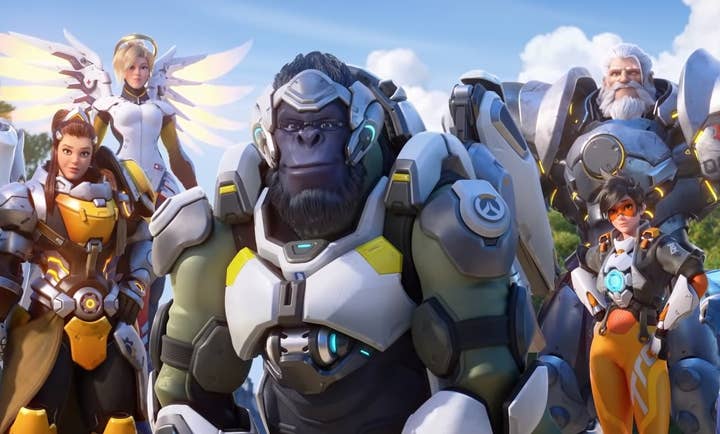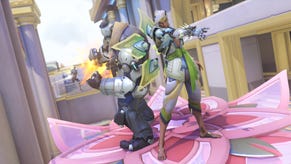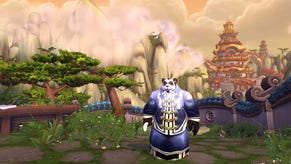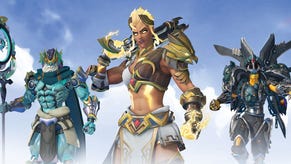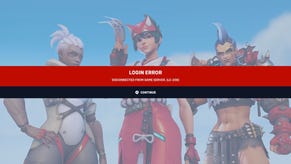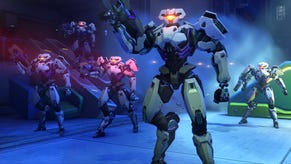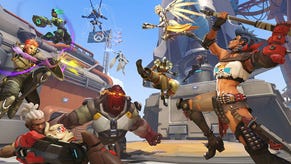Overwatch 2 tries to balance acquisition against retention | Opinion
Blizzard’s sequel-cum-relaunch remains the year’s most interesting business experiment as it tries to thread the needle of retaining existing players while appealing to newcomers
As the release slate of major games for the remainder of the year continues to thin out – the latest casualty being Ubisoft’s pirate-themed naval combat game Skull & Bones, which has slipped back to March – increased attention inevitably focuses on what’s left in the line-up.
Nintendo still has a strong holiday quarter on the cards, with Bayonetta 3 and Pokemon Scarlet / Violet giving it solid pitches at two very different parts of the Switch demographic, while Sony has a sure-fire hit in God of War Ragnarok in November.
Beyond those platform exclusives, however, there are only a handful of big titles still slated for the upcoming months. There’s Call of Duty: Modern Warfare II, which seems like a guaranteed blockbuster; there’s Gotham Knights, which could really go either way (after the critical and commercial failure of Square Enix’ Avengers game, I don’t think any superhero title can be considered a slam dunk, with the possible exception of Sony’s Spider-Man series). And then there’s Overwatch 2.
Blizzard is attempting something complex, turning a premium game with a large player base into a free-to-play game overnight
I’ve written before about how Overwatch 2 is, from a business perspective, the most interesting game of the year – a complete root and branch overhaul of the business model of a successful live service game masquerading as the launch of a sequel. Blizzard is attempting something extremely complex here, turning a $60 premium game with a large, active player base into a free-to-play game overnight.
Every time I read about it I’m reminded of the time-lapse video of Shibuya Station that went viral around the world a few years ago, showing how engineers reconfigured two major train lines to connect them up on new platforms in the space of a single night, without any disruption to either the morning or evening train services. Blizzard’s goal is similar – it wants to make a gigantic change to its service offering, without disrupting the experiences of its customers. It won’t make for such an entertaining time-lapse video, but it’s a fascinating experiment, and with the launch set for next Tuesday, the experiment is happening in real-time right now.
Judging from the reporting and online discussions around the game, that experiment has hit a few bumps in the past week, thanks to the unveiling of the First Time User Experience (FTUE) for those coming to Overwatch 2 as new players, rather than continuing players of the original game. Attracting new players is, of course, a major reason for this launch; the premium up-front payment model of the original Overwatch arguably stunted its player base growth compared to games like Fortnite, so Blizzard hopes to see a large influx of new players when Overwatch 2 arrives as a free download.
Being a big, high-profile franchise launching in a period when tumbleweeds are rolling across the AAA release schedule will no doubt help to drive a lot of new people to check out Overwatch next week and in the weeks to come – which will be great for Blizzard, but will also bring its own problems.

Just like existing players of Overwatch needed to be accommodated in the business model overhaul (leading to the decision to brand this as Overwatch 2 rather than as a new phase for the existing game, and no doubt informing the decision to drop the loot box monetisation system in favour of the more popular season pass system), the game’s existing player base also needs to be considered in any plans that would result in new players suddenly flooding into the service.
One key way to accomplish this is the extensive FTUE for Overwatch 2, which eases new players into the game by gating access to content and game modes behind progression barriers. This means that while returning Overwatch players will instantly be able to access all existing playable characters, modes, and features, new players will have to play for many hours before unlocking them.
Glance at the headlines, and it looks Blizzard has stumbled badly in how this is implemented. The most common figure being bandied about is that new players will have to play around 100 matches in order to unlock all of the character roster being carried over from Overwatch 1.
Meanwhile, anyone who wants to play competitively will need to win 50 quick matches before unlocking that functionality. That’s a huge amount of game time to be able to access content that existing players of Overwatch can use on day one, and on the face of it, it’s not unreasonable to wonder if this long, long on-ramp might not put off a lot of new players – players who have made no commitment beyond downloading a free client, and can shrug and drop the game at any moment without any sense of sunk cost.
The design of the FTUE doesn’t look like a stumble at all – rather, it’s another important part of Blizzard’s experiment in swapping out the engines mid-flight
The optics of this are made worse by the fact that while the original Overwatch is not being sold any more, Blizzard does sell something called the Watchpoint Pack, which for $40 gives you a bunch of extra skins and currency for Overwatch 2, but also gives purchasers the ability to skip the FTUE just like existing Overwatch players can.
Technically, Watchpoint Pack purchasers are existing Overwatch players, since the pack gives access to the existing Overwatch game – but the few remaining days before the transition to Overwatch 2 is hardly enough time to garner in-game experience comparable to the 100-match long FTUE that Blizzard considers necessary for all other new players.
I don’t think this is actually intended to be a cynical "pay $40 to skip the long, tedious FTUE" cash grab, but I’m definitely surprised that Blizzard didn’t anticipate that that’s exactly how it would be interpreted by consumers.
Set aside the issue of the Watchpoint Pack, though, and I think the design of the FTUE doesn’t look like a stumble at all – rather, it’s another interesting and important part of Blizzard’s experiment in swapping out the engines mid-flight, which is designed to allow the company to radically change its acquisition method for new players without creating disruption that would wreck its retention of existing players. It’s perfectly reasonable to want new players to spend some time with the training wheels on before setting them loose on the game’s online ecosystem.
Nothing would sour the launch of the "new" game for existing players like having the quality of online games suddenly plummet as a host of new players who don’t know the characters, maps, or modes flood into the servers. Not only would that be a threat to retention of existing players, but it would also be a bad experience for most new players – nobody wants to start playing an exciting new game only to be dropped into a meat-grinder full of players with years of experience.
Restricting newcomers to the FTUE and gradually introducing characters should help both existing and new players
Restricting newcomers to the FTUE and gradually introducing characters, modes and functionality should help both existing and new players. It will separate the newcomers from the old players at first, and by the time they do start playing with more advanced players, they’ll have had an opportunity to gradually familiarise themselves with the majority of the game’s systems. That much is straightforward and sensible – but even some who accept that reasoning might question the 100-match figure being cited in the headlines.
That number, however, is a little misleading. Saying it takes 100 matches to unlock all the content makes it sound like players will be grinding through those 100 matches trying to reach an endpoint where all the content is finally unlocked – an impression not helped by the idea that you can pay forty bucks to skip the grind.
That kind of grind right at the outset of the new player experience would not only suck, it would be a disastrous design decision for a free-to-play game – you can’t expect players who have no investment beyond downloading a client to stick around for a long, tedious grind. However, it’s not a good or fair description of what Blizzard is doing.
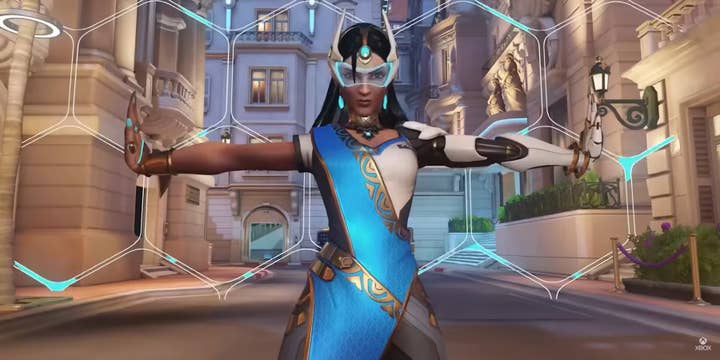
That 100 match number is calculated from a system where players unlock a new playable character from the original Overwatch roster every two or three games; there are 32 of them in total. Players will be unlocking new characters on a very regular basis for a pretty long time, which gives them time to familiarise themselves with each of them – hopefully preventing them gumming up the works for existing players once they start competing in matches together – and, rather than feeling like a lot of content is being gated, it should actually feel fun.
New players won’t have a 100-match grind in mind; to them, it should feel like they’re working towards a lot of near-term goals, with an interesting new character unlocked as a reward after every few games. Arguably more arduous is the requirement to win 50 quick play games before being allowed to engage in competitive games – but since players are doing 100 matches to unlock all the characters, most of them should be close to that 50 number by the time the full character roster is available to them anyway.
My point here isn’t to quibble too much about the specifics of how Blizzard has balanced this aspect of the game launch – there are reasonable arguments for other ways the company could have approached these elements of the game. The bigger picture, though, is the lessons we can take away about the many delicate challenges a developer faces in balancing the needs and wants of a well-established player base against the commercial requirement to overhaul the game and bring in a new wave of players.
This is a transition that has traditionally happened to games that were on the verge of collapse, making the free-to-play transition into a Hail Mary play and meaning that the risk of losing the existing player base was far outweighed by the potential reward of winning over a new audience. For Blizzard, on the other hand, losing the existing Overwatch player base in the transition would be an absolute disaster – truly the worst possible scenario for the franchise.
The bigger picture is the lessons we can take away about the challenges a developer faces in balancing the needs and wants of a well-established player base against the commercial requirement to overhaul the game and bring in a new wave of players
Thus far, the balancing act seems to be working pretty well. The one area where Blizzard has definitely tripped up regarding the FTUE is optics; "a 100-match grind that you can pay $40 to skip" is a narrative they should have foreseen and avoided, and it’s surprisingly naïve of the company to have allowed that narrative to take root.
The actual FTUE, on the other hand, sounds like a pretty decent and enjoyable experience for new players – as it should be, since F2P games that don’t grip and entertain their players in the first few hours won’t have any players at all in subsequent hours.
Blizzard’s grand experiment rolls on; we won’t know for sure which parts have succeeded or failed until next week – or rather, until we start seeing how player numbers are impacted in the weeks and months after that – but for now it remains arguably the most interesting thing that’s happening in the live service games space right now.
The increasingly sparse release schedule leading up to Christmas could, in the best case scenario, be a clear runway for Overwatch 2 to find a major new audience – and in a time of economic worries and $70 games, I wouldn’t bet against lots of consumers turning their eyes to a free-to-play sequel for a well-loved franchise, however experimental that relaunch strategy may be.
